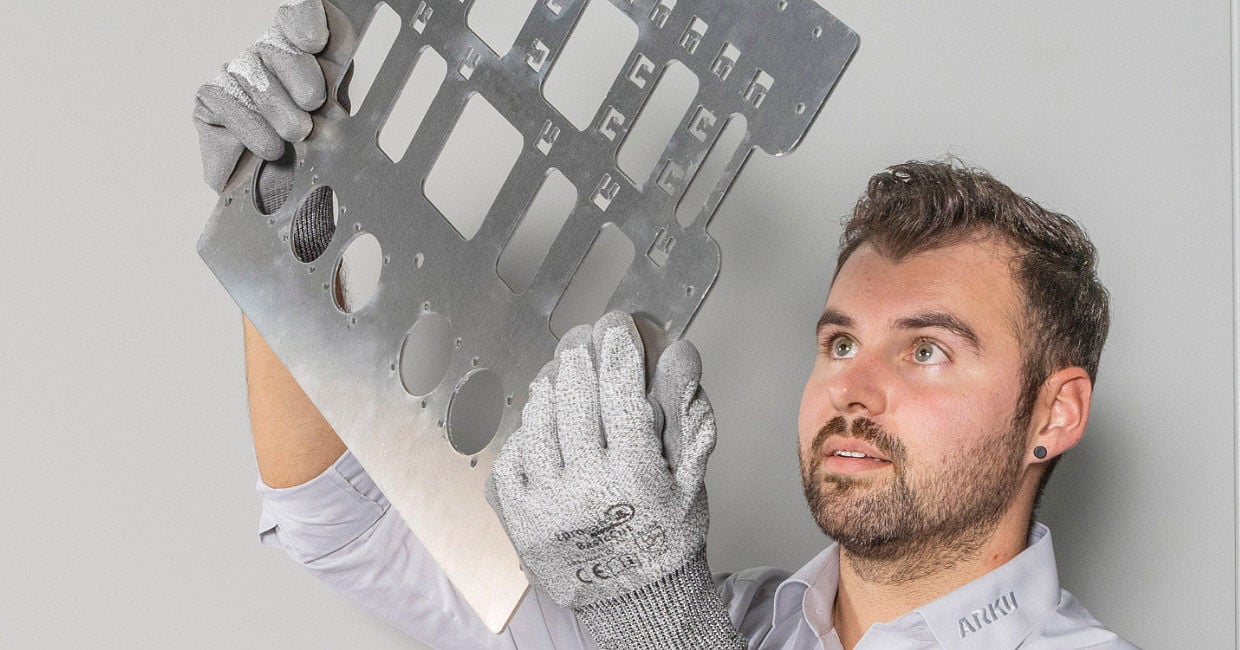Its best to deburr laser-cut parts with a machine.
Fortunately, laser-cut parts can be deburred quickly and easily with an automated solution. Thin sheets are usually cut with a laser and can be processed with wide belts, rotary brushes rollers or block-style brushes. These blocks run over the sheet metal in a double-sided manner. Apart from that, there are other filleting tools with their advantages and disadvantages, e.g. disc brushes or rotary brushes. Each tool and each process has its own advantages and disadvantages. For example, block tools allow processing from both sides, while rotary brushes process the sheet "only" from the topside.
The companies with an automated solution also work much more productively than those that rely on manual deburring by hand. This is because manual deburring with a file or angle grinder takes about ten times the time compared to a machine. In addition, a deburring machine works with repeatable accuracy and is not dependent on the employees' daily form.
A very practical side effect is that the deburring machine also removes the splatters from the support grid, which can never be completely avoided during laser cutting. This is because the brushes also process the surface of the work pieces.
Edge rounding of laser-cut parts is also important.
A deburring machine is beneficial even if you actually cut your parts via a laser without burrs. Materials usually have very sharp edges after laser cutting. Employees can injure themselves on these edges. There is also the risk of cables or hoses chafing on these edges after being installed in the final equipment. None of this is desirable, which is why rounded edges are often specified in drawings, even for laser-cut parts.
A deburring machine does also round sharp edges: after all, the deburring machine is specifically designed to process the edges anyways.
Surface finishing of laser-cut parts
Surface finishing is a third processing step, a deburring machine can take care of. A corresponding module with an abrasive belt or abrasive fleece can be integrated into some deburring machine models. This gives the laser-cut parts the desired appearance after deburring. They then come out of the machine exactly as the customer requires them.
By the way, you do not have to buy a deburring machine yourself to benefit from the process. There is also the option of having laser-cut parts deburred on a contract basis. In this case, the service provider owns the deburring machine. He then also takes care of the entire process, from picking up the parts at the company to returning them on time.
State-of-the-art deburring technology
Rely on ARKU: State-of-the-art technology, best deburring results, fast and reliable processing, uniquely intuitive operation, low unit costs.



